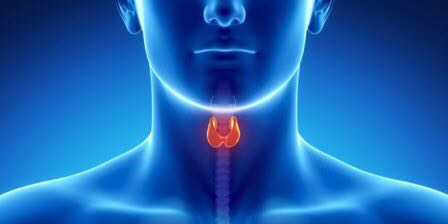According to a recent survey from a leading health center, 200 million people worldwide are suffering from some form of thyroid disease. And half of them have no idea about the disease, this condition is usually found in women more than men. If untreated, it leads to serious illness in different parts of the body.
What is Thyroid?
The thyroid gland is a small butterfly shaped gland at the base of the neck, it produces thyroid hormone, which is essential for growth and metabolism and it controls many activities in the body, including how fast your heart pumps and how fast you burn those calories. It also regulates most functions of the body and even synchronizes the oxygen level which is inter-related to every system of our body.
Causes
The Thyroid gland is regulated by Thyroid Simulated Hormone (TSH) which is constructed with the help of pituitary gland in the brain. When thyroid hormone levels are high in the body, they switch off the production of TSH which causes inappropriate TSH levels and this result in Hyperthyroidism (Overactive) or Hypothyroidism (Underactive).
Hyperthyroidism:
So what is Hyperthyroidism? This condition occurs when a thyroid gland produces inappropriate amount of hormones, destroying various parts of our glands. This hormonal imbalance is caused in about 1 percent of all women. This disease is also known by the common name as ‘Grave’s Disease’ and it passes on from generation to generation and runs in the family.
If Hyperthyroidism is not treated properly, life threatening situation can also arise known as ‘thyroid storm’. Symptoms include high blood pressure, fever, irregular heart beat that may lead to coma.
Hypothyroidism:
Hypothyroidism is also is known as underactive gland because it produces less thyroid hormone which results in slow metabolism of the body. It can occur if it fails to work properly which is done with the help of Hypothalamus or pituitary gland.
Hypothyroidism results in low levels of Thyroxin, which results in slowing down metabolism of the body. And it also increases the amount of oxygen in our body, that stimulates our cells and produce new proteins. Symptoms include weight gain, high cholesterol, and cold intolerance, decreased sweating, if untreated it may lead to anemia and slow heart rate.
Getting Diagnosed:
One of the easiest methods to diagnose Thyroid is too look back into medical history of a person. Treatments include physical examinations conducted by labs such as measuring the levels of TSH and Thyroid hormones. Ultrasounds and nuclear thyroids scans allow for visual and functional examination of thyroid glands.
Serology measures the levels of antibodies that are associated with hypothyroidism and hyperthyroidism.
The Right Treatment
The usual treatment for hypothyroidism is through thyroid replacement therapy. During this people do not experience any side effects, but if too much thyroid hormone is taken, it may result to heart palpitations and difficulty in sleepiness.
Hyperthyroidism can be treated with iodine that includes radioactive iodine. It destroys parts of Thyroid gland that will keep Hyperthyroidism under control. However if too much of it is destroyed it will result in Hypothyroidism. It is used in low levels so it does not cause any further damage.
One should start with high fiber diet that includes eating lot of soy or cruciferous vegetables. Diet can affect the way in which the body absorbs thyroid medication. Using iodized salt maintains the required levels of iodine for thyroid glands.
Improved public health awareness is also a step to cope the disease. And with appropriate treatment and diet, thyroid hormone levels should return to normal level.
